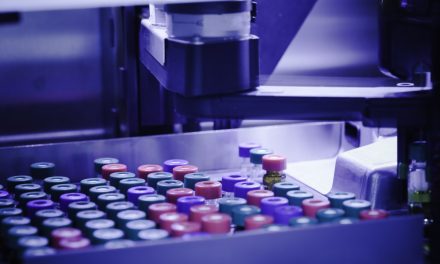What’s the SCOOP – 2023 Trends, part three
It’s been a good year for the EMS industry in general, and with better component availability it would have been even better. But how is everyone in the industry feeling about 2023? I reached out to around 50 CEOs and many responses are in. Take a look at what those running EMS companies and those the companies that supply them as well as a smattering of what consultants, experts and economists think.
We’ll be serializing the thoughts and musing of the industry’s great and good over the coming week and wrapping that series up with an e-book in January. I’ve started interviewing some of those that contributed and you can watch those interviews in the EMS@C-Level youtube playlist, or listen to the EMS@C-Level podcast on buzzsprout or wherever you get your podcast. If you have an opinion and want to share it, write to me in less than 400 words and we can add it to the mix. If you don’t have my email address hit me up on LinkedIn.
Part three brings more thoughts from the great and the good of the EMS industry on trends to watch in 2023. This time we hear from leadership from KATEK, TTI, Cogiscan, and consultants Pamela Gordon and Randall Sherman.
 Christoph Antener, Chief Procurement Officer at KATEK SE
Christoph Antener, Chief Procurement Officer at KATEK SE
I expect the situation on certain commodities and sub-commodities to remain as tight in 2023. For example Automotive chips and Power electronics chips. Also, some MCUs are still very tight and we won’t get the quantity we need for Q1 and Q2 of 2023. In these instances we will have to find solutions with our customers to run production.
We are also seeing some COVE disruptions through lockdowns, limited workforce and limited capacities. Factory outputs are not as high as they should be, especially for back-end capabilities.
In some commodities, we are seeing better or good availability in the first half of 2023. Some of the aforementioned critical chips should have better availability in the second half of 2023, as we see better confirmation dates from semiconductor manufacturers. We are still in deep exchange on a weekly basis.
The amount of spot-buys actions was definitely lower in Q4 of 2022 than before. We got, as mentioned, some unpredicted quantity allocations for Q4 and for Q1 of 2023 to run production. We still have some double digit price spikes or increases from semiconductor manufacturers which we got in Q4 with validity to January 1st 2023!
 Petra Becker, Chief Transformation Officer at KATEK SE
Petra Becker, Chief Transformation Officer at KATEK SE
Disruption in the supply chain has become our new normal. Supply chain challenges, whether from the existing or new geopolitical conflicts, inflationary pressures, cyber risks and/or climate events are part of everyday life. Supply Chain Risk Management with greater transparency, better end-to-end analysis and the ability to make faster decisions will mitigate them and the companies with the agility to manage the unexpected will likely gain market shares.
I expect that companies will focus on cross functional teams, stronger interaction on a routine base with customer and supplier to build a robust and continuous business plan. It is no longer an option to discuss if companies implement rolling forecast processes instead of a one year budget process, it will become a must.
 John Drabik, President, TTI Americas:
John Drabik, President, TTI Americas:
2021 and 2022 have been record-setting years for many in the electronic components industry, but we are now beginning the transitional phase to slower growth as we face a range of macroeconomic headwinds and a rebalancing of inventory across the supply chain.
As we enter 2023, I expect demand and lead times for IP&E products to slowly decrease as supply and true demand begin to align. Cancellations, reschedules, inflation, labor and supply chain disruptions will continue to challenge the industry throughout the first half of 2023.
Despite the macroeconomic uncertainties, I expect demand from Military/Aerospace, Industrial and the Transportation Segments to remain resilient. New design activity will also increase as Design Engineers pivot from chasing parts to focus on new product development and innovation that will drive future demand for years to come. At TTI, our focus will remain consistent, we will continue to invest in people and parts.
Yes, 2023 will feel different but be assured the long-term growth fundamentals in the electronics component industry remain solid.
 Pamela J. Gordon, Teacher, Coach, Consultant, Strategist on ESG and Supply Chain
Pamela J. Gordon, Teacher, Coach, Consultant, Strategist on ESG and Supply Chain
With the U.S. Securities and Exchange Commission’s proposed rules for environment, social, and governance (ESG) reporting, executives will be busier than ever in 2023 to accurately and meaningfully measure and reduce their corporations’ negative impacts. Thus, there’s a burgeoning need for sustainability-trained managers and executives to fill sustainability job openings across the tech sector and other industries, globally. It’s hard to believe that supply chains are still a “black box” to too many customers, investors, and regulators who now need to understand the significant risks and positive contributions supply chains deliver to ESG responsibility. The greenhouse gas emitted by suppliers, and by-products over their lifetimes (both counted by the GHG Protocol in the “scope 3” emissions category), collectively overshadow those of the corporation’s own (scopes 1 and 2) emissions. The days are gone when corporate management can ignore their products’ and services’ Climate Change contributions before and after the sales transaction, owing to customers’, investors’, and regulators’ demands to reliably know the environmental and social impacts of full product life cycles. This underscores the need to hire and promote managers and executives who have the skills and experience in measuring, auditing, and reducing ESG risk, while innovating products and processes to be the competitive winner in ESG.
 Mitch DeCaire, Director – Business Development at Cogiscan
Mitch DeCaire, Director – Business Development at Cogiscan
As most regions emerge from pandemic related impediments and embrace a new form of ‘normal’, digitalization strategies that were previously halted due to the pandemic are being dusted off, updated, and implemented. I am quite optimistic about 2023, simply because I sense a lot of pent-up demand and eagerness from electronics manufacturers to implement factory digitalization strategies to improve and optimize their manufacturing operations.
From my position, the timing couldn’t be better thanks to the continued emergence and maturation of IIoT technology. For many years these technologies felt a bit like a science project within our industry, but now we have access to factory-ready tools to properly convert data into tangible and actionable insights.
With a wider variety of intelligent applications available on the shopfloor, such as running AI-enabled advanced analytics on factory data to detect and prevent problems before they even occur, providing essentially instantaneous ROI, more and more manufacturers are hungry for these benefits – momentum is building, and many companies are ready and willing to invest.
As COVID-19 recedes our world continues to face other serious global issues, which temper some of my enthusiasm for next year. I remain cautious about what the future holds regarding major corporate investments. The only thing I am certain about in 2023 is uncertainty. I firmly believe our industry will continue to improve the world through smarter manufacturing, but the pace at which this can happen in our current global climate is up for debate.
 Randall Sherman, Founder and CEO, New Venture Research
Randall Sherman, Founder and CEO, New Venture Research
The trade tensions between the US and China, coupled with China’s Zero-COVID policy, are beginning to have a significant impact on the operation and new business development of contract manufacturers with major operations in China. Customers are asking for contingency plans for moving production out of China, pointing to locations like Vietnam and India, as a hedge against future shutdowns in China.
It is clear now that China’s Zero-COVID policy has been a failure as evidenced by major violent protests among its citizenry, and economic suffering from lockdowns and other onerous restrictions on the movement of people. Moreover, the lockdowns and restrictions on movement and labor in the high-tech sector have depressed consumer confidence and growth, which in turn is having an impact on many other industries.
Xi Jinping faces the choice between enforcing Zero-COVID even more strictly, even though that would invite recession and public fury, or allowing the disease to spread very widely, with calamitous loss of life. Attempting to chart a middle path is only helpful if he uses the time he gains to raise vaccination rates, stock up on antivirals, and expand ICUs. Not all of Mr. Xi’s options are palatable, and he is running out of time to choose one. In a remarkable about-face, the Chinese government announced a broad rollback of Zero-COVID rules in mid-December, an implicit concession to public discontent. Residents say they are welcoming the opening. Says one, “It’s a risk worth taking…. If the lockdown had gone on, more people would have died from poverty and starvation even if they stayed COVID-free.”
Yet despite the loosening of Zero-COVID restrictions, things seem to be going from bad to worse. China’s aggressive pursuit of Zero-COVID has resulted in a low level of natural immunity among the public, leaving the population vulnerable. In early December, government adviser Feng Zijian, a former official with the National Health Commission, predicted that 60 percent of the population could be infected in the next wave of infections. Authorities expect an upsurge in cases around the Lunar New Year holiday in late January as people return to their hometowns to celebrate.
China has not imported any foreign-made vaccines, which are widely considered more effective than China’s homegrown jabs. And a surge in cases is likely to overwhelm China’s healthcare system, which has been focused for the past three years on contact tracing and quarantines rather than building up availability and delivery of coronavirus vaccines. Omicron and its sub-variants are more contagious than the variants that prevailed in the early stages of the pandemic, straining the system and is now beginning to spread like a forest fire in Beijing and other areas.
One large EMS company shared with Manufacturing Market Insider an estimate of the amount of business that might be lost in China for the next three years, 25% of revenue, while the output transferring to Malaysia and Mexico would double. Eight of this company’s customers are asking for an alternative manufacturing site as a contingency plan.
2023 will certainly be a contentious year with many disruptions in the supply chain and the reorganizing of production in SE Asia.


 Christoph Antener, Chief Procurement Officer at KATEK SE
Christoph Antener, Chief Procurement Officer at KATEK SE Petra Becker, Chief Transformation Officer at KATEK SE
Petra Becker, Chief Transformation Officer at KATEK SE John Drabik, President, TTI Americas:
John Drabik, President, TTI Americas: Pamela J. Gordon, Teacher, Coach, Consultant, Strategist on ESG and Supply Chain
Pamela J. Gordon, Teacher, Coach, Consultant, Strategist on ESG and Supply Chain Mitch DeCaire, Director – Business Development at Cogiscan
Mitch DeCaire, Director – Business Development at Cogiscan Randall Sherman, Founder and CEO, New Venture Research
Randall Sherman, Founder and CEO, New Venture Research









